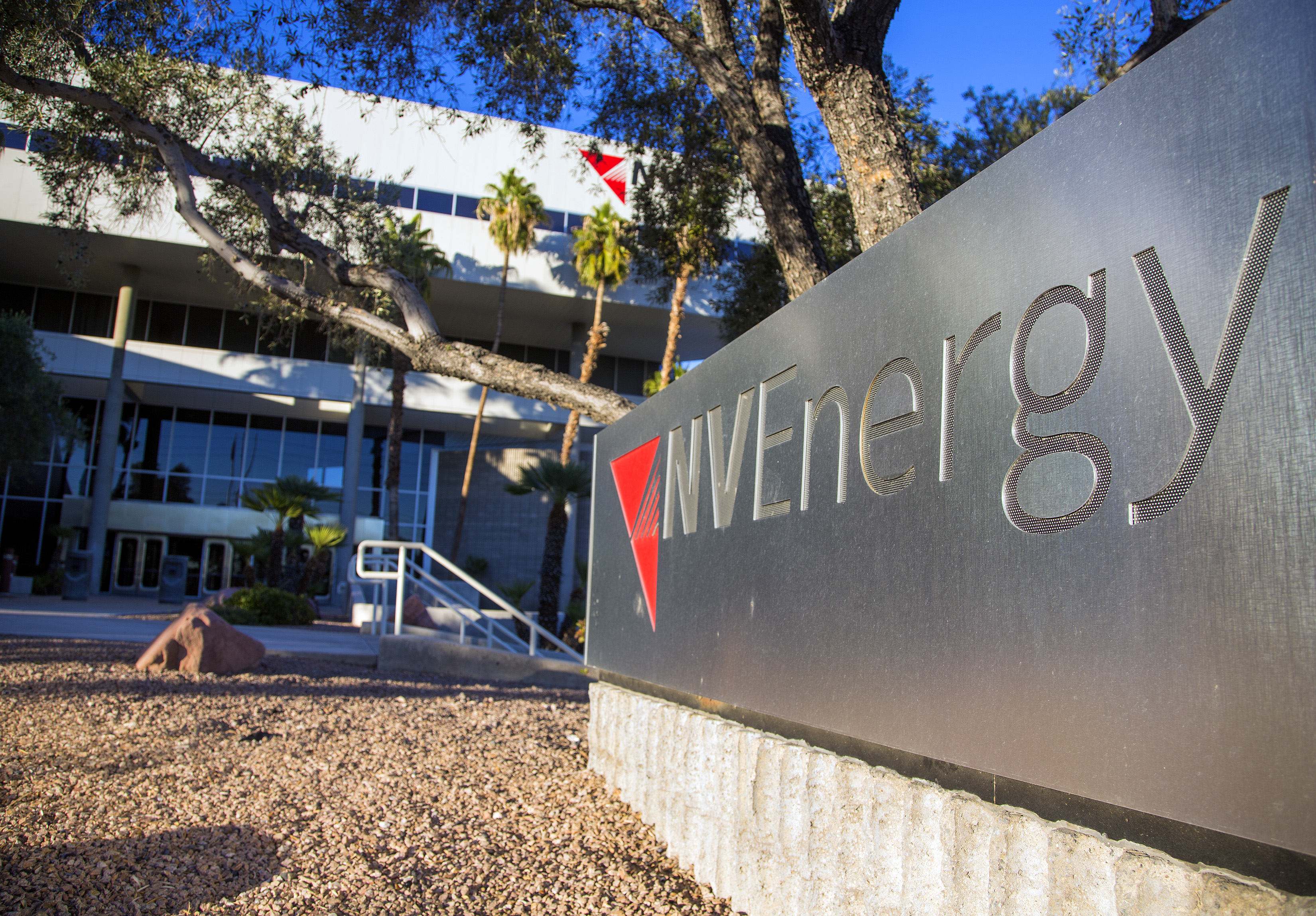NV Energy ordered to pay back $60 million to Southern Nevada customers after over-collection, about $53 per household

NV Energy customers in Southern Nevada will get a credit of about $53 starting with the October billing cycle, after state utility regulators ordered the company to return nearly $60 million in overearnings to its customers.
The state’s Public Utilities Commission made the decision during its meeting Wednesday, resulting in the largest ever one-time bill credit given by the utility to its customers. Commissioners wrote in the published order that the utility should return the overearnings collected over the last two years to customers as soon as practical, in part to help “alleviate some of the financial pressures caused by the COVID-19 global pandemic.”
“The Commission finds that (NV Energy’s) shareholders have already enjoyed the benefits of the overearning’s mechanism, while (NV Energy’s) ratepayers have been waiting for two years to see their share of the benefits,” commissioners wrote in the order. “The Commission finds that ordering an immediate return of the overearnings in the form of a one-time bill credit at a time when the ratepayers need is greatest is a reasonable method of maintaining its statutory obligation to balance the interests of ratepayers and shareholders.”
Customers do not have to apply for the credit, which will first be applied to any outstanding balance and then to any current balance. Any excess will be carried over to the next billing cycle.
The overearning totals stem from the utility’s 2017 general rate case, the state-mandated triennial process in which the utility submits an application to the PUC with suggested rates necessary to cover operating costs, service to customers and a fair return to company stakeholders.
In that 2017 general rate case, the Commission ordered the utility to implement an earnings sharing mechanism requiring the company to split any profits above 9.7 percent of the approved rates would be split 50-50 between customers and the utility.
Fast-forward three years to the utility’s 2020 general rate case, and utility representatives testified that it tracked overearnings of about $43.3 million in 2018 and $16.4 million in 2019 that was returnable to customers. The utility also said it will include any potential overearnigns from 2020 in its next general rate case, as potential earnings sharing is “not known or measurable due to uncertainty over financial results.”
While not disputing the total amount owed back to customers, NV Energy opposed the structure and timing of the one-time bill credit ultimately adopted by the PUC.
The utility wrote in filings that it would prefer to amortize (spread out) the owed payments over a three-year period, claiming the one-time bill credit was “not based on sound rationale and that it would have an immediate negative cash flow impact” to NV Energy.
It testified that its cash balance in June and July 2020 was $13.6 million and $52.3 million respectively — far below the average cash balance of $169.1 million and $234.4 million it typically averages over those two summer months. It also testified that those months “represent a large percentage of its cash flow” and that the utility is projecting to be in a net borrowing position by the end of 2020.
While the utility said it could rely on lines of credit to make up the $59.7 million outflow, the “unplanned credit would negatively impact its liquidity,” while potentially sending negative signals to bond rating agencies and creating “the impression of a regulatory environment that is more focused on responding to immediate external pressures on an ad hoc basis.”
But in its order, PUC commissioners wrote that the economic recession and financial crisis caused by the COVID-19 pandemic presented a “unique set of circumstances that require the Commission to take unique action.”
The order also stated that arguments made by NV Energy about its potential cash flow issues were “not compelling,” given that the company has more than 68,000 customers in arrears for more than 30 days. With a substantial amount of customers not taking advantage of COVID-19 related repayment plans, members of the Commission said it was likely a large percentage of the nearly $60 million owed to customers would likely end up being applied to their past-due balance.
“The Commission finds that this is a longer-term problem with no guarantees that some of the accounts in arrears will be able to begin paying their outstanding balances any time soon,” they wrote in the order.
In a statement sent Friday, NV Energy spokeswoman Jennifer Schuricht said the PUC’s decision aligned with the company’s goal of reducing its rates by $120 million in its current general rate case.
“We support the PUCN’s decision to provide some of the benefit early, as it is consistent with the intention of our filing,” she said in an email.
The order also shed some light on the extent to which NV Energy customers have been affected by the pandemic. NV Energy paused service shutoffs for nonpayment in March because of the COVID-19 pandemic, but plans to resume shutoffs in October for customers with a past-due balance who have “not indicated they are impacted by COVID-19.”
As of mid-August, NV Energy reported that more than 68,000 of its residential and small commercial customers were in arrears, owing a total of about $29.5 million. That amount includes both anticipated arrears and those caused by the pandemic; the utility had about $6.8 million in arrears at the same time in 2019.
More than 31,300 customers have been in arrears for more than 90 days, with an average of about $575 owed to the utility. Across all customer classes, the median amount of arrears owed is around $222.NV Energy has also tracked about $1.5 million in late fees since early March, with about $1 million attributable to residential customers.
